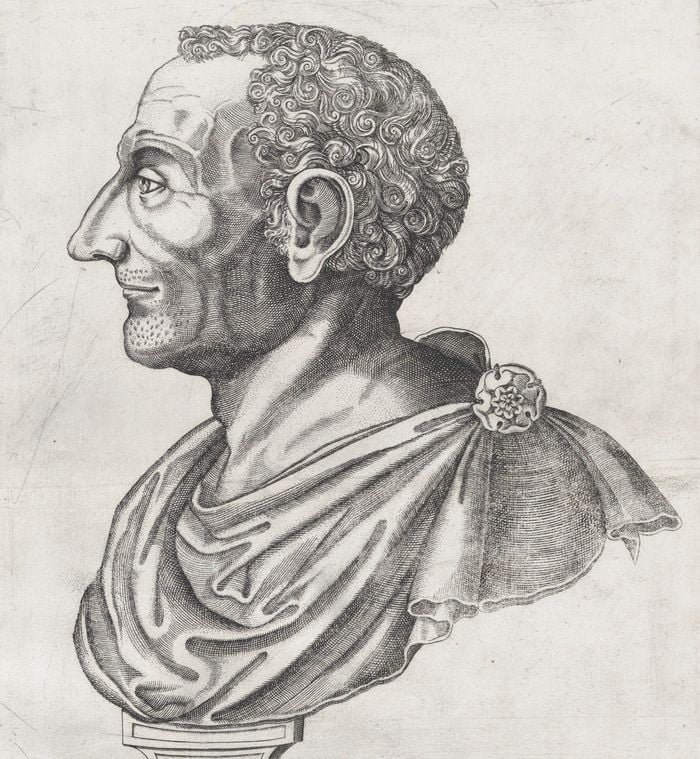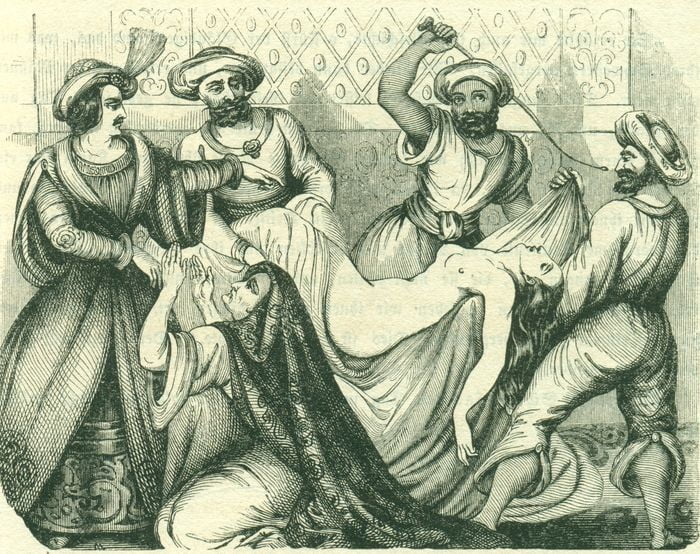Ancient Rome
It is a commonplace of literary history that Roman art was largely imitated or derived from the Greek, and in particular that Roman literature contributed little to the world`s store of masterpieces. Yet among the Romans the short story was esteemed more highly and was often more skillfully developed than it was among the Greeks.
The first of the stories chosen is from the historian Livy. Before his day there is very little material from which to select, although if the earlier writers of epic and history were better known to us, we might have found stories in the works of Livius Andronicus, Ennius, and the historians, most of whose writings have been lost. In the Letters of Cicero are numerous incidents falling within our category, but none of them of sufficient intrinsic interest to warrant their inclusion in this volume. Livy`s History abounds in episodes, many of them related with a certain matter-of-factness that characterizes a great deal of Latin prose writing. Still, Horatius at the Bridge is a stirring tale rendered doubly effective by its simplicity.
Ovid was a born teller of stories, and though he borrowed largely from the Greeks and was a fastidious poet intent upon achieving a refined and elegant style, the numerous myths which he treats at length in his Metamorphoses include half a dozen of the loveliest stories ever written.
Other poets and historians and miscellaneous writers—Valerius Maximus, Varro, Statius, Tacitus and Suetonius—tried their hand at story-telling, and even Vergil in his JEneid recounted episodes that are genuine stories, but none of them could rival the technical skill with which the minor poet Phaedrus turned the ffssopian fables and everyday incidents of life and history into graceful and appealing tales. Like the earlier fabulists, Phaedrus preached litde sermons. The most interesting parts of his work are the little anecdotes, like the one included in this volume; these are miniature stories. The other famous Roman fabulist was Avianus who, rediscovered in the Middle Ages, exerted a profound and lasting influence in France and Germany. But his work is neither so finished nor so attractive as that of Phaedrus.
Many genuine stories are found in the personal correspondence of the time, chiefly among the published collections of Cicero and Pliny the Younger. Pliny wrote several short stories which he elaborated with conscious skill, for he wrote with a view to publication. Throughout all modern literature we find stories, indeed lengthy stories (see Richardson), related through the medium of letters. This is a deliberate device employed to lend to the narrative an air of actuality. It would be enlightening to know whether Pliny wrote his Haunted House as a literary experiment, or whether he really believed the story. But supposing he related it as a fact—supposing even that all the facts were to be proved scientifically correct, would it be any the less a good story?
Matron of Ephesus
Petronius belonged to a different world in which Latin prose had lost a good deal of its rigid dignity, and like the literature of the late Hellenistic period in Greece, was characterized by a facile cynicism on the part of the writers, and an over-luxuriance of style. The writers were very numerous, poets, historians, satirists, and even scientists interspersing their writings with tales of haunted houses, ghosts, and all the supernatural apparitions that are the stock-in-trade of the story- writer. Petronius and Apuleius, however, stood head and shoulders above the rest of their contemporaries and followers. The Matron of Ephesus, hackneyed though its theme may be, is a masterpiece of satirical fiction, while The Dream is one of a dozen tales of mystery and imagination which constitute the chief glory of The Golden Ass. That rambling romance, it will be remembered, also contains the enchanting Cupid and Psyche, which is far too long for inclusion in a collection of this sort.
Just at what point Roman literature ended is a matter to be determined by the historians, but after the Fifth Century A.D. it becomes increasingly difficult to designate any tale as unmistakably Roman.
Then foreigners began to change the face of the Empire, Christianity damped the ardour of the artist and stifled the imagination of the storyteller. It is not until the dawn of modern times, some six or seven centuries afterward, when the fragments of Roman stories were again taken up and imbedded in the curious mediaeval mosaics of the Gesta Romanorum and the Hundred Ancient Tales, that we realize that the art of tale-telling had never been forgotten.
Throughout the break-up of Rome and the barbarian invasions, through the darkest years of the Tenth Century, the Latin traditions were preserved in the manuscripts of the monasteries, and on the lips of singers, minstrels, acrobats, and actors.
With Apuleius and Petronius the short story, as a literary-form, achieved a decided technical advance over the efforts of the Greeks. With these later writers the story was told largely for its own sake, and not to illustrate a moral truth or glorify the deeds of the Roman people.
Livy (59 B.C.-I7 A.D.)
Titus Livius, known to us under the English title of Livy, though born in the provinces at Padua, spent most of his life at the capital, where he was a teacher and writer of history. His History of Rome was a monumental work, of which only a part has come down to us. Like practically all the historians of antiquity (and most of the modems, for that matter) he introduces stories and anecdotes on hearsay evidence, using them in order to glorify his country or to drive home a lesson. Horatius at the Bridge is a case in question, and though it may be founded on fact, it is probably apocryphal in detail.
The present translation (including Chapters IX and X of Book II) is a revision of that made by D. Spillan, published in the Bohn edition in 1872. There is no title in the original.
The above text has been copied from docappadocia.com; For the rest of the story you can visit link Horatius at the Bridge.
Read More about The Secret History part 1








